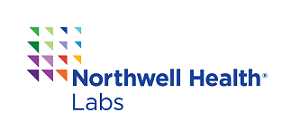Phenylalanine and Tyrosine PHENYLAL
Synonyms |
|
Allscripts (AEHR) Order Name |
Phenylalanine and Tyrosine |
Sunrise Clinical Manager (SCM) Order Name |
Phenylalanine/Tyrosine Ratio Measurement |
Clinical Info |
Monitoring effectiveness of therapy in patients with hyperphenylalaninemia |
Specimen Type |
Blood |
Container |
Lavender Top Tube |
Collection Instructions |
Container/Tube: Dark Green top (sodium heparin) or Lavender (EDTA Top Tube |
Transport Instructions |
Refrigerated |
Specimen Stability |
Whole Blood |
Methodology |
Liquid Chromatography-Tandem Mass Spectrometry (LC-MS/MS) |
Days Performed |
Monday through Friday |
Performing Laboratory |
Mayo Medical Labroratories |
CPT |
84030-Phenylalanine |
PDM |
5302878 |
Result InterpretationPHENYLALANINE 27.0-107.0 nmol/mL
TYROSINE <4 weeks: 40.0-280.0 nmol/mL > or =4 weeks: 25.0-150.0 nmol/mL
The quantitative results of phenylalanine and tyrosine with age-dependent reference values are reported without added interpretation. When applicable, reports of abnormal results may contain an interpretation based on available clinical information.
A phenylalanine:tyrosine ratio higher than 3 is considered abnormal. Phenylketonuria (PKU) is the most frequent inherited disorder of amino acid metabolism (about 1:10,000-1:15,000) and was the first successfully treated inborn error of metabolism. It is inherited in an autosomal recessive manner and is caused by a defect in the enzyme phenylalanine hydroxylase (PAH), which converts the essential amino acid phenylalanine to tyrosine. Deficiency of PAH results in decreased levels of tyrosine and an accumulation of phenylalanine in blood and tissues. Untreated, PKU leads to severe brain damage with intellectual impairment, behavior abnormalities, seizures, and spasticity. The level of enzyme activity differentiates classic PKU (PAH activity <1%) from other milder forms; however, all are characterized by increased levels of phenylalanine (hyperphenylalaninemia). Treatment includes the early introduction of a diet low in phenylalanine. Some patients may also benefit from adjuvant tetrahydrobiopterin (BH4) supplementation (a cofactor for PAH), or enzyme substitution therapy. |
|
Forms |
|

